Abstract
1. We assessed short-term potentiation of ventilation in response to brief systemic normocapnic hypoxaemia in conscious dogs. Four recumbent dogs were exposed to Pa, O2 35-55 mmHg with Pa, CO2 maintained normocapnic for forty to fifty seconds and then abruptly returned to normoxia. Minute ventilation (VI) increased 4- to 5-fold during hypoxia due to both increased tidal volume (VT) and frequency (f). Several trials of hypoxic exposure with normoxic restoration were conducted with animals intact and following bilateral cold blockade of the cervical vagus nerves sufficient to block completely the Hering-Breuer reflex. 2. In the vagally intact dog, when normoxia was restored immediately following normocapnic hypoxia (PET, O2 = 40 Torr), expiratory time (TE) was prolonged to 190 +/- 68% of control (mean +/- S.E.M., range 53-350%) on the second or third breath and then returned slowly to control values on subsequent breaths. The prolongation of TE following removal of the hypoxic stimulus was positively correlated with the magnitude of the peak VT reached during hypoxic exposure. However, VT and VI remained significantly greater than control over a twenty second or four-breath period following hypoxia. 3. In the vagally blocked dog, no prolongation of TE was observed following isocapnic hypoxia; nor was TE following hypoxia correlated with the magnitude of the VT during hypoxia. The time constants of decay of VI, VT and f back to control, following hypoxia averaged 16, 19 and 9 s, respectively. 4. We conclude that short-term potentiation of ventilatory output following peripheral chemoreceptor hypoxic stimulation does exist in the awake dog, but the stimulatory after-effect is masked and TE is prolonged by a 'memory' of inhibitory vagal feedback. The magnitude of this inhibitory after-effect on TE prolongation increases in proportion to the increase in tidal volume achieved during the hypoxaemia. 5. This inhibitory effect of vagal memory may contribute to instability of breathing pattern and apnoea following transient disturbances in ventilatory output.
Full text
PDF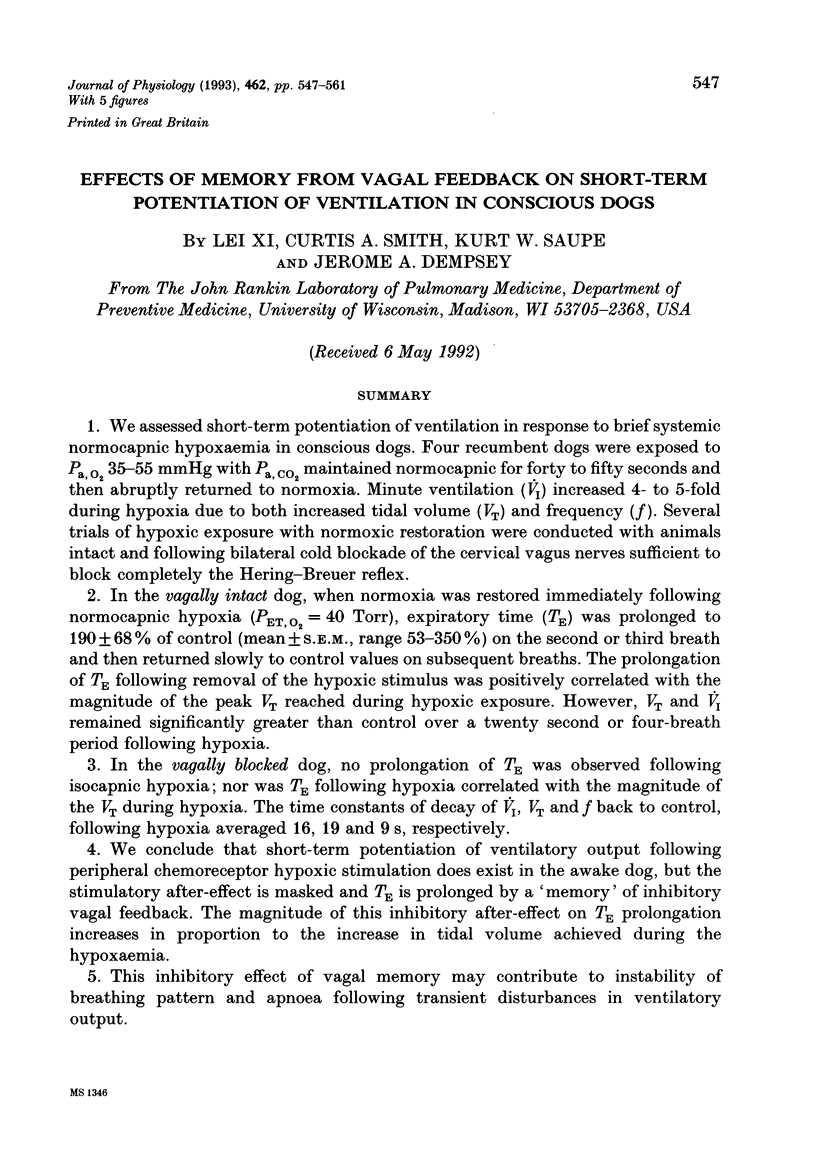
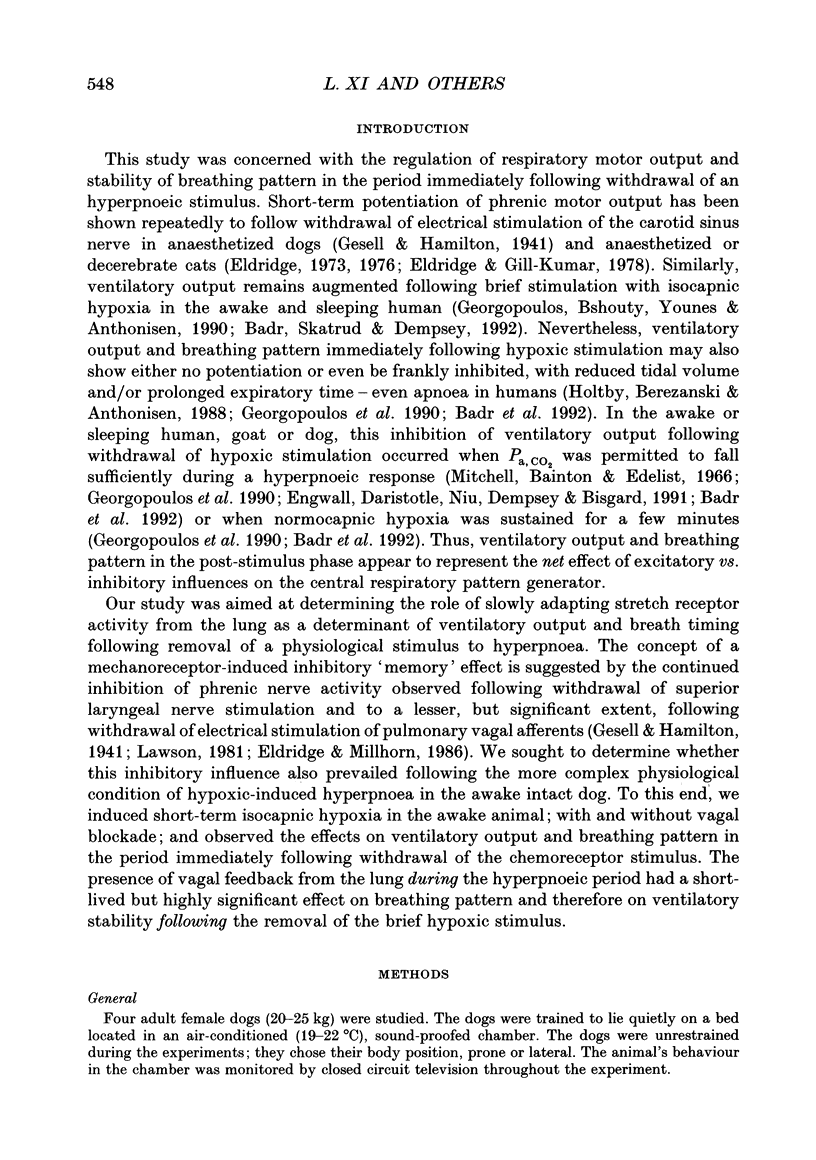
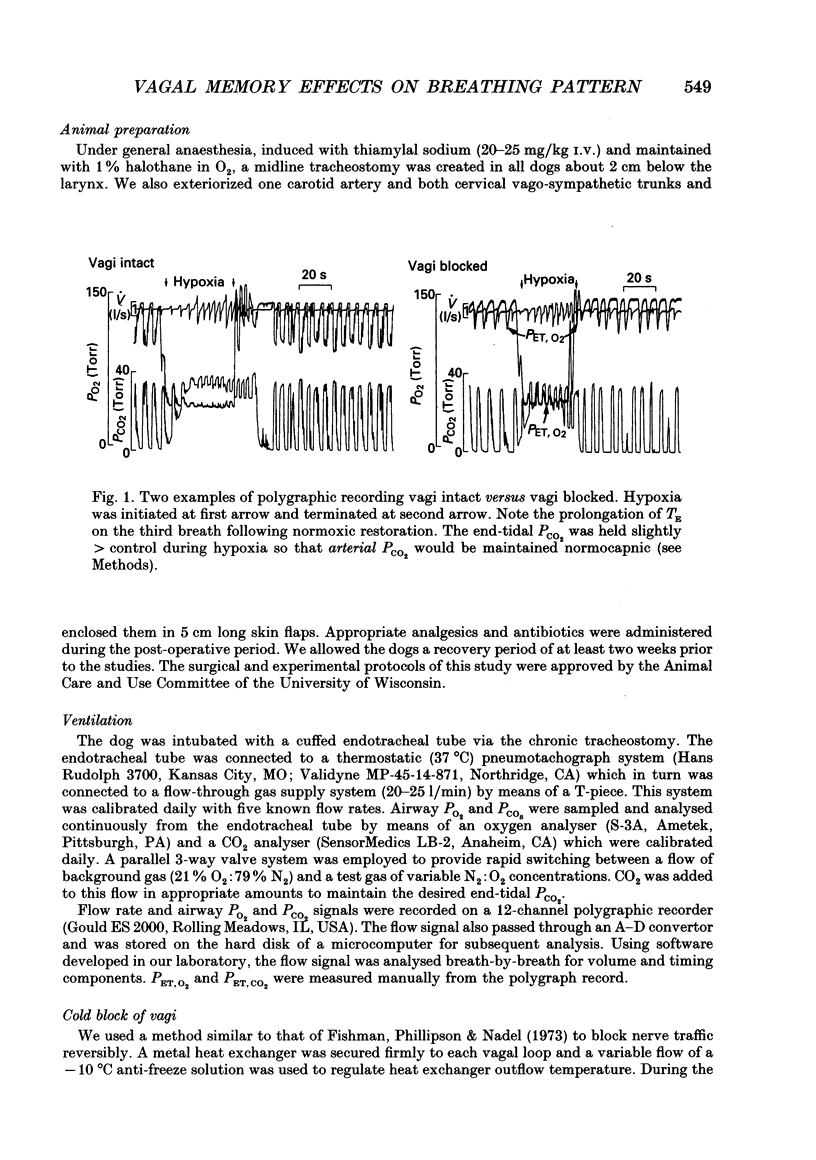
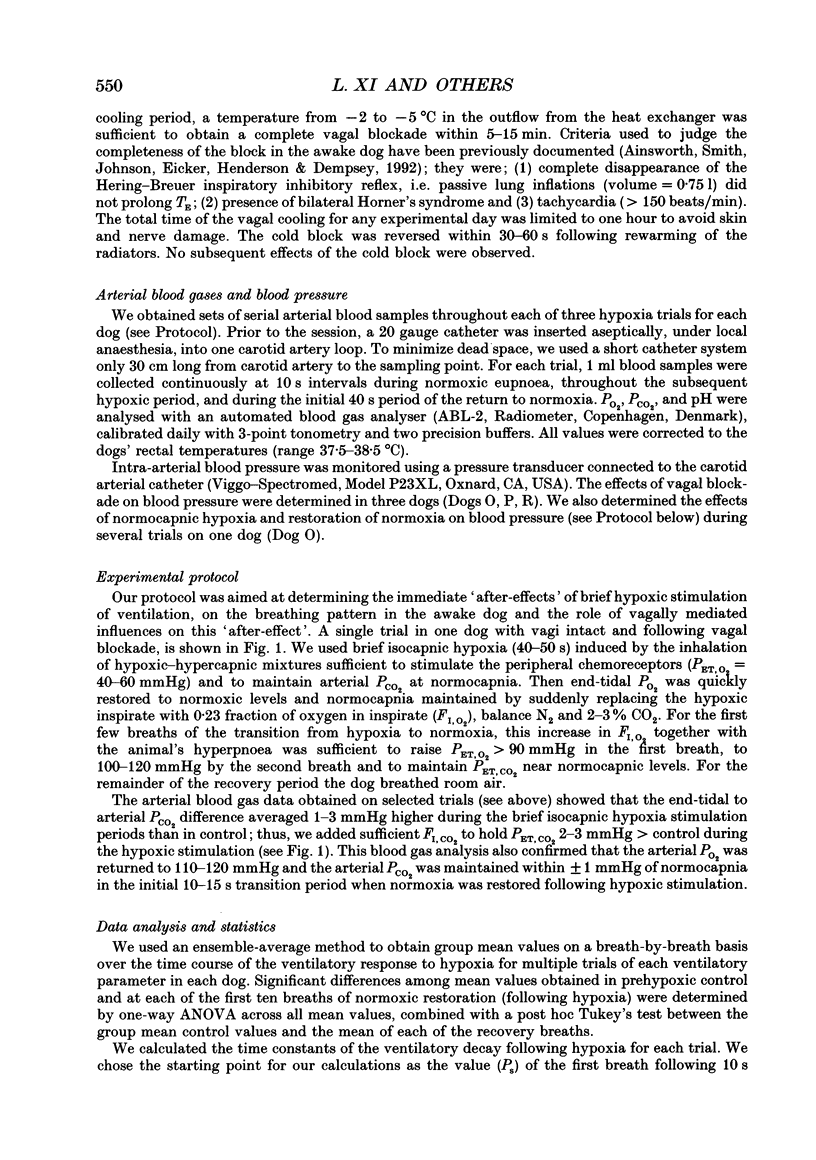

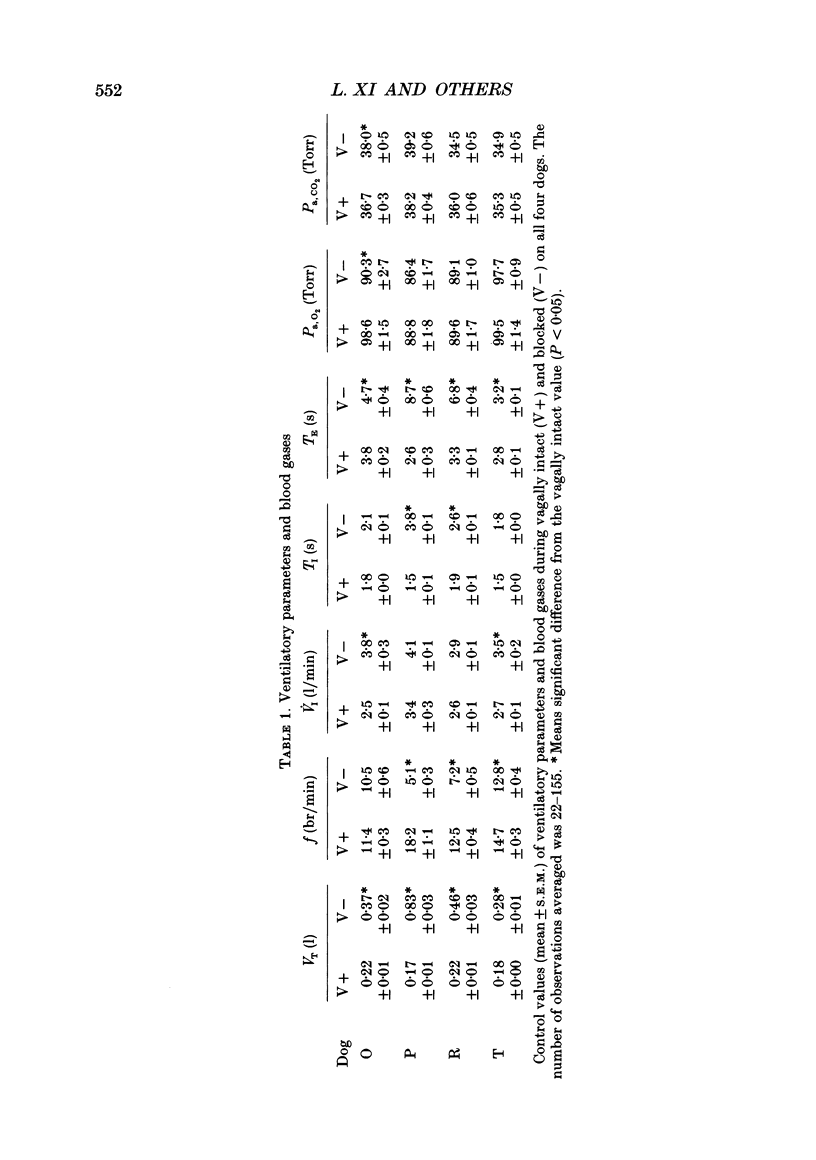


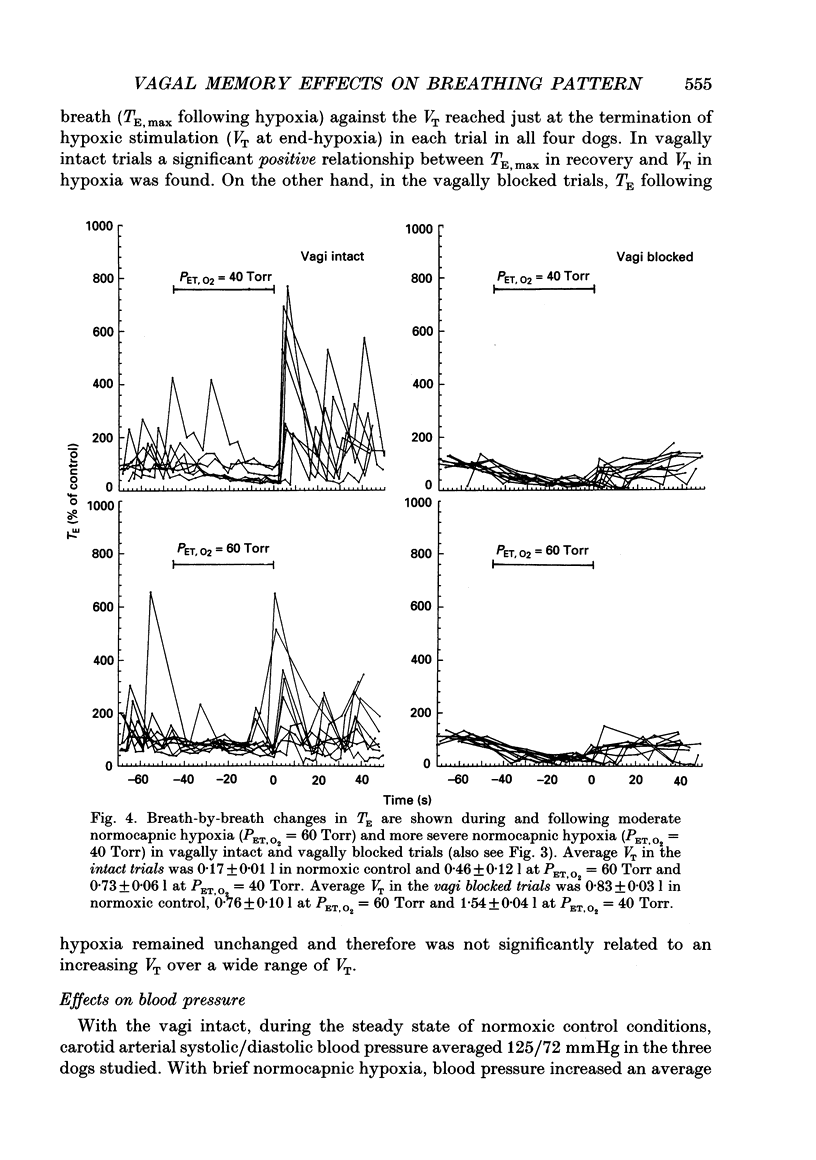
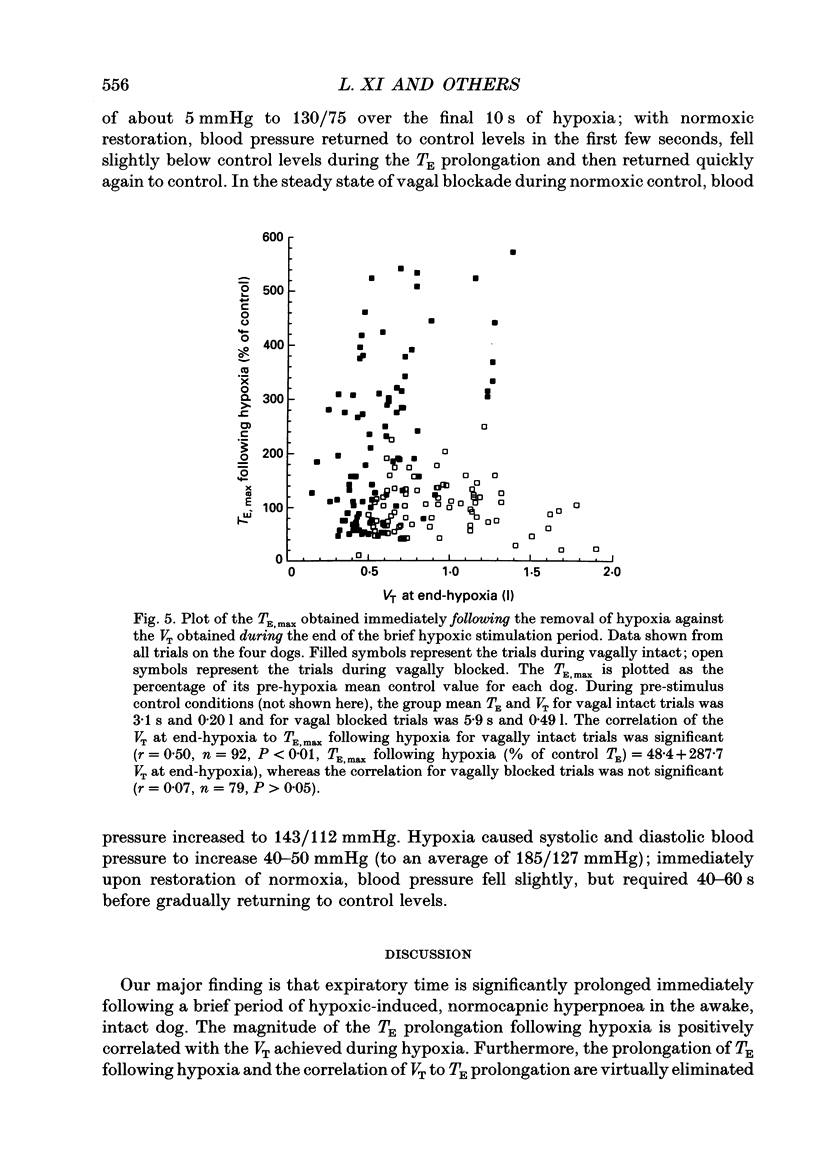

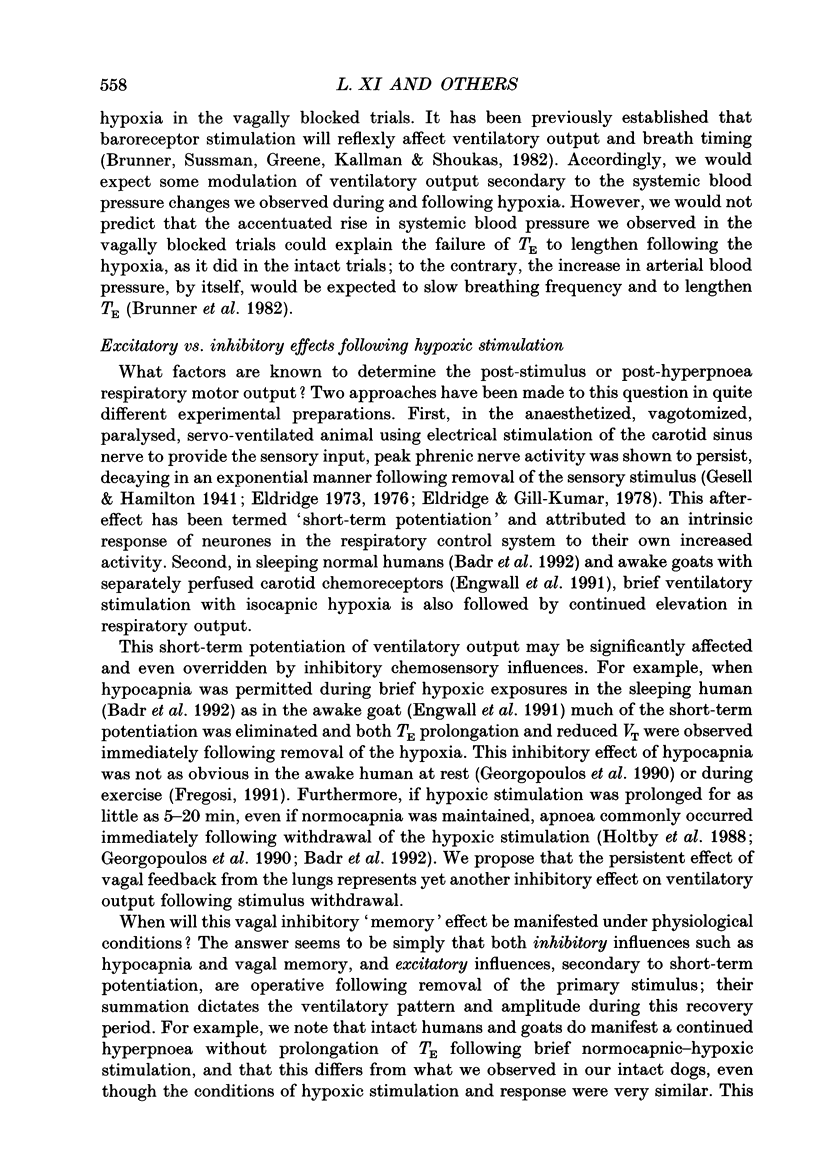
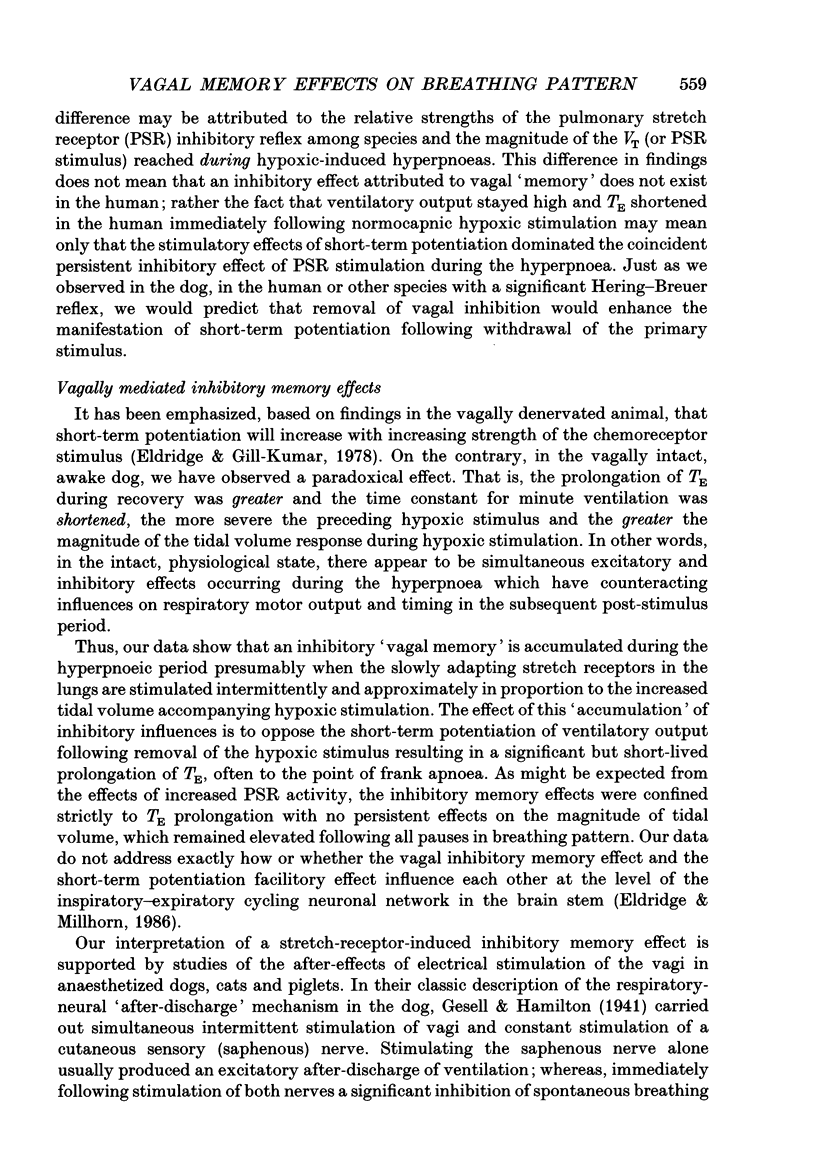
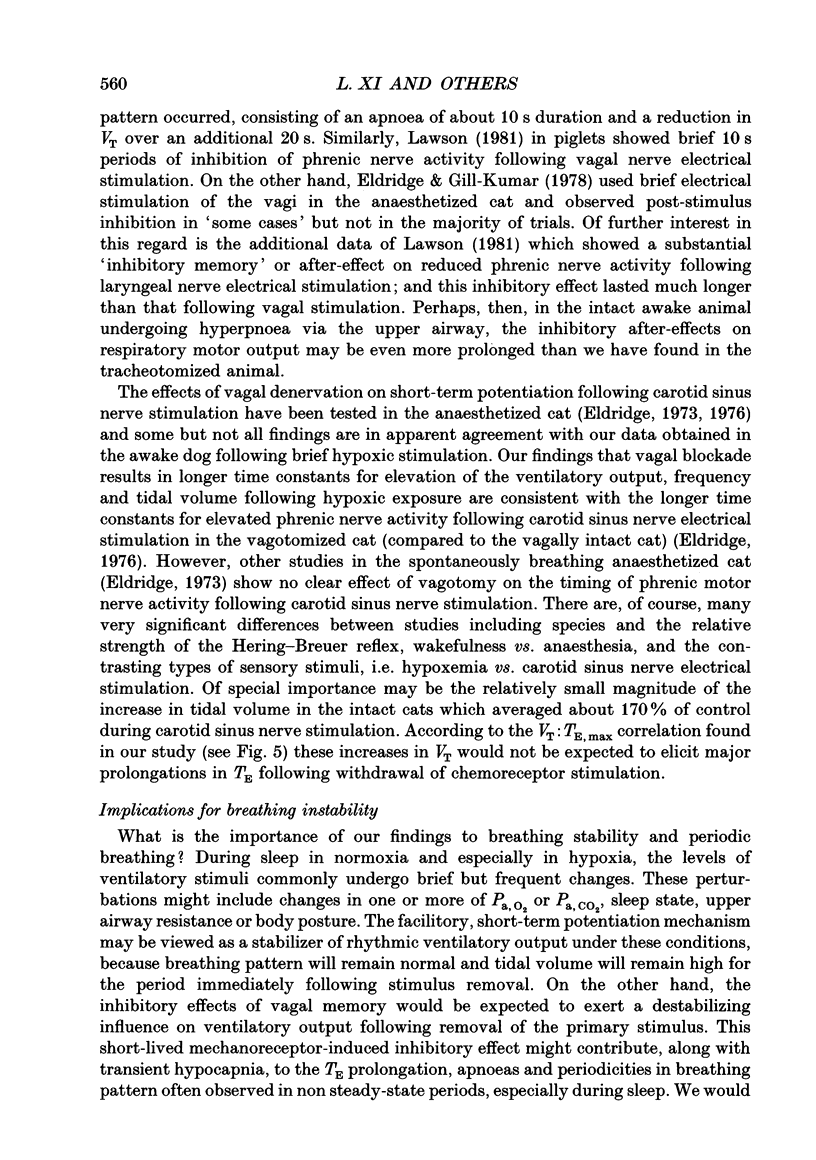
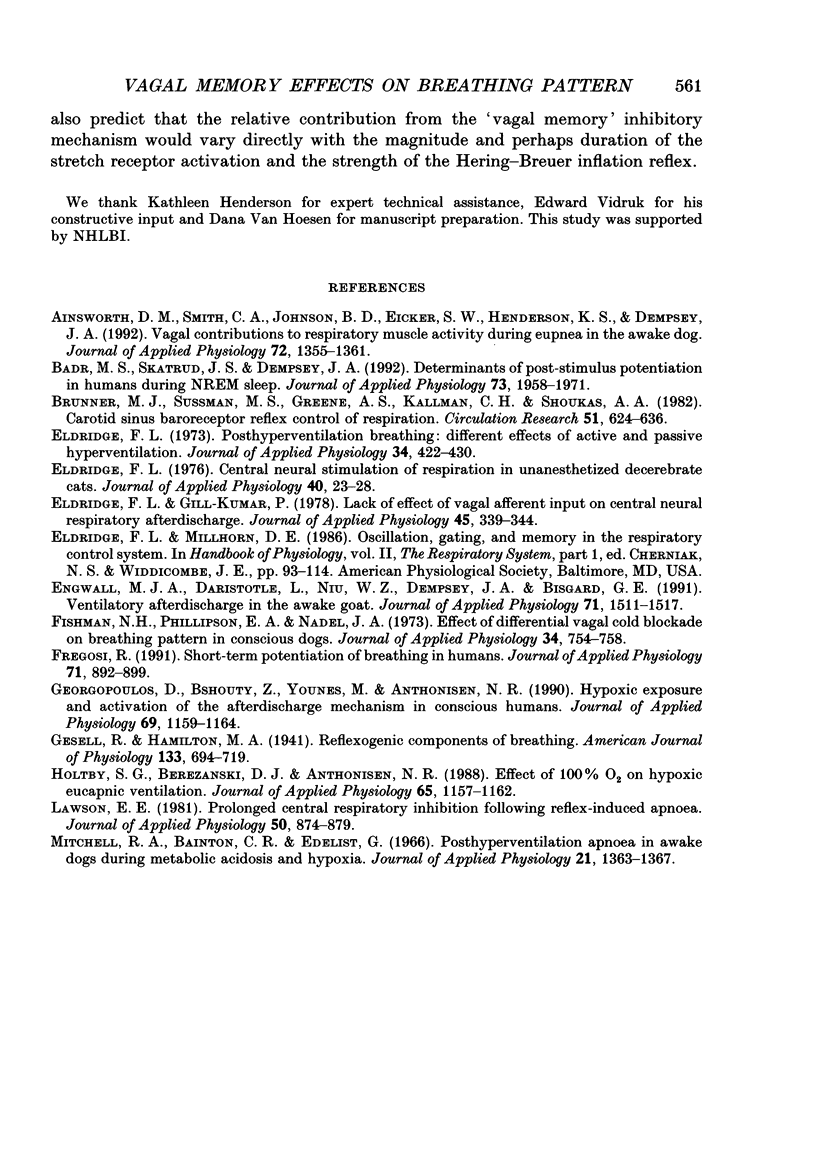
Selected References
These references are in PubMed. This may not be the complete list of references from this article.
- Ainsworth D. M., Smith C. A., Johnson B. D., Eicker S. W., Henderson K. S., Dempsey J. A. Vagal contributions to respiratory muscle activity during eupnea in the awake dog. J Appl Physiol (1985) 1992 Apr;72(4):1355–1361. doi: 10.1152/jappl.1992.72.4.1355. [DOI] [PubMed] [Google Scholar]
- Badr M. S., Skatrud J. B., Dempsey J. A. Determinants of poststimulus potentiation in humans during NREM sleep. J Appl Physiol (1985) 1992 Nov;73(5):1958–1971. doi: 10.1152/jappl.1992.73.5.1958. [DOI] [PubMed] [Google Scholar]
- Brunner M. J., Sussman M. S., Greene A. S., Kallman C. H., Shoukas A. A. Carotid sinus baroreceptor reflex control of respiration. Circ Res. 1982 Nov;51(5):624–636. doi: 10.1161/01.res.51.5.624. [DOI] [PubMed] [Google Scholar]
- Eldridge F. L. Central neural stimulation of respiration in unanesthetized decerebrate cats. J Appl Physiol. 1976 Jan;40(1):23–28. doi: 10.1152/jappl.1976.40.1.23. [DOI] [PubMed] [Google Scholar]
- Eldridge F. L., Gill-Kumar P. Lack of effect of vagal afferent input on central neural respiratory afterdischarge. J Appl Physiol Respir Environ Exerc Physiol. 1978 Sep;45(3):339–344. doi: 10.1152/jappl.1978.45.3.339. [DOI] [PubMed] [Google Scholar]
- Eldridge F. L. Posthyperventilation breathing: different effects of active and passive hyperventilation. J Appl Physiol. 1973 Apr;34(4):422–430. doi: 10.1152/jappl.1973.34.4.422. [DOI] [PubMed] [Google Scholar]
- Engwall M. J., Daristotle L., Niu W. Z., Dempsey J. A., Bisgard G. E. Ventilatory afterdischarge in the awake goat. J Appl Physiol (1985) 1991 Oct;71(4):1511–1517. doi: 10.1152/jappl.1991.71.4.1511. [DOI] [PubMed] [Google Scholar]
- Fishman N. H., Phillipson E. A., Nadel J. A. Effect of differential vagal cold blockade on breathing pattern in conscious dogs. J Appl Physiol. 1973 Jun;34(6):754–758. doi: 10.1152/jappl.1973.34.6.754. [DOI] [PubMed] [Google Scholar]
- Fregosi R. F. Short-term potentiation of breathing in humans. J Appl Physiol (1985) 1991 Sep;71(3):892–899. doi: 10.1152/jappl.1991.71.3.892. [DOI] [PubMed] [Google Scholar]
- Georgopoulos D., Bshouty Z., Younes M., Anthonisen N. R. Hypoxic exposure and activation of the afterdischarge mechanism in conscious humans. J Appl Physiol (1985) 1990 Sep;69(3):1159–1164. doi: 10.1152/jappl.1990.69.3.1159. [DOI] [PubMed] [Google Scholar]
- Holtby S. G., Berezanski D. J., Anthonisen N. R. Effect of 100% O2 on hypoxic eucapnic ventilation. J Appl Physiol (1985) 1988 Sep;65(3):1157–1162. doi: 10.1152/jappl.1988.65.3.1157. [DOI] [PubMed] [Google Scholar]
- Lawson E. E. Prolonged central respiratory inhibition following reflex-induced apnea. J Appl Physiol Respir Environ Exerc Physiol. 1981 Apr;50(4):874–879. doi: 10.1152/jappl.1981.50.4.874. [DOI] [PubMed] [Google Scholar]
- Mitchell R. A., Bainton C. R., Edelist G. Posthyperventilation apnea in awake dogs during metabolic acidosis and hypoxia. J Appl Physiol. 1966 Jul;21(4):1363–1367. doi: 10.1152/jappl.1966.21.4.1363. [DOI] [PubMed] [Google Scholar]


